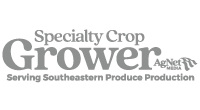By Jawwad A. Qureshi In winter, citrus trees enter a state of quiescence due to lower light and cooler temperatures, which slows their metabolic activity. Therefore, most citrus trees do not produce new shoots during this period. These young shoots are essential for the growth of the Asian citrus psyllid (ACP), Diaphorina citri. The ACP is a small sap-feeding insect …
Understanding Acclimation and Protecting Trees From Freeze
By Davie Kadyampakeni, Chris Oswalt and Muhammad A. Shahid With the onset of cooler temperatures, citrus trees cease active growth and become quiescent. This continued quiescence at lower temperatures results in a subsequent increase in cold hardiness, known as acclimation. Citrus trees proceed through many changes during acclimation, including: The above factors combine to increase the ability of citrus tissues …
Preparing Citrus Groves for Cold Fronts
By Muhammad A. Shahid, Shahid Iqbal and Davie Kadyampakeni As temperatures begin to drop across citrus-growing regions, now is the time for growers to prepare their groves for potential freeze events. Citrus trees, especially young plantings, are susceptible to cold temperatures. Damage from a single freeze event can result in canopy dieback, fruit loss and even tree death. Proper planning …
What to Consider When Replanting a Grove
By Edwin Gutierrez-Rodriguez and Bosques Jonael Replanting a citrus grove can be an exciting prospect, but it’s not as simple as swapping trees. New cultivars, for example, may require a different setup. Here are some aspects to consider before jumping in: First steps: Newly released cultivars and rootstocks as wells as the Citrus Research and Field Trial programs are refreshing the …
Dual-Action Approach to Mitigate Preharvest Fruit Drop
By Taylor Livingston and Tripti Vashisth Preharvest fruit drop is a major concern for Florida citrus growers, especially in groves affected by huanglongbing (HLB). Environmental stressors such as drought, flooding and cold snaps further accelerate fruit drop and tree decline. Recent field trials in Central Florida evaluated the use of plant growth regulators (PGRs) — specifically gibberellic acid (GA3) and …
Planning This Season’s Use of Brassinosteroids for Better Juice Quality
By Fernando Alferez and Divya Aryal Brassinosteroids (BRs) are a class of plant growth regulators with several effects on plant growth and development. They engage in crosstalk with other hormones like auxin, gibberellins, ethylene and abscisic acid, influencing all plant growth and development aspects including fruit maturation, but the timing of this effect appears to be short and tightly regulated. …
How to Avoid Herbicide Contamination Issues
By Ramdas Kanissery Even a small amount of leftover herbicide in the spray tank can harm citrus trees. Contamination often occurs when the same sprayer is used on trees of different ages without being cleaned properly between applications. It can also happen when the sprayer is used for other pesticide products without a thorough rinse. Herbicide residues from certain herbicide …
Optimize Citrus Water Management
By Edwin Gutierrez-Rodriguez and Bosques Jonael Efficient water use in citrus production, like other fruit tree crops, goes far beyond simply turning on the irrigation system. It’s a strategic practice that affects tree health, fruit quality and long-term sustainability, making it a smart agricultural practice. Some key tips to optimize your water management are: Remember, water is also a signal, …
Irrigation Management for Improved Citrus Production
By Davie M. Kadyampakeni and Alisheikh A. Atta The conventional four Rs for nutrient management are right source, right place, right rate and right time. This approach allows growers to synchronize nutrient supply with crop demand, enhance tree health and fruit yield, and abate economic costs and environmental losses. In contemporary farming systems in Florida citrus production, considering a fifth R …
Fall Insect and Mite Management
By Lauren Diepenbrock Unlike northern regions, fall in Florida is not generally a time when insect, mite and other invertebrate pest populations decline rapidly. In Florida citrus, we generally see the opposite of this trend. In the hot, dry end of summer and early fall, mite populations often soar, requiring management to prevent excessive damage to fruit. (See The Florida …
How To Determine if the Actual Production History Policy Will Be Beneficial
By Ariel Singerman Between the 2021–22 and 2023–24 citrus seasons, Florida orange growers were more likely to receive indemnity payments under the Actual Production History (APH) crop insurance policy compared to the Dollar Amount policy. Moreover, when indemnities were paid, the APH policy provided a higher average payout. This raises the question: Will APH continue to be advantageous for Florida orange …
Putting Down Brown Rot
By Megan Dewdney Sometimes there is an unfortunate coincidence between the timing of fruit changing color and rain events. This can set up a situation where brown rot occurs unexpectedly and growers need to stop the disease after it has begun. CONTROL OPTIONS By this time of year, the traditional brown rot control measures are less effective. These are primarily …
Pre-Harvest Clues for Better Citrus
By Flavia Zambon and Mac Hossain The Millennium Block is located at the University of Florida Institute of Food and Agricultural Sciences (UF/IFAS) Indian River Research and Education Center (IRREC). It is designed to support long-term citrus trials under real-world growing conditions, including HLB pressure, but without oxytetracycline injections. Currently, the block has 19 distinct grapefruit and pummelo scions in …
Factors That Influence Juice Quality
By Tripti Vashisth, Johann Hiller and Taylor Livingston Poor fruit quality has long been a significant hurdle for sweet orange growers in the HLB era. With high fruit drop rates and challenges in harvest management, many growers find themselves picking fruit earlier than ideal, resulting in subpar Brix levels. To effectively improve the Brix of the fruit, it is essential …
Expo Delivers Research Updates and Practical Tools for Growers
By Michael E. Rogers The 2025 Citrus & Specialty Crop Expo took place Aug. 20–21 at the Florida State Fairgrounds in Tampa. The event brought growers, researchers and industry professionals together for two full days of education and discussion. This year’s program featured what may have been a record number of University of Florida Institute of Food and Agricultural Sciences …
Installing and Using Soil Moisture Sensors
By Sandra M. Guzmán and Amir Rezazadeh During Florida’s rainy and hurricane season, accurate water management becomes even more critical for citrus growers. Soil moisture sensors (SMSs) can be used as a baseline tool for making informed irrigation decisions. But to get reliable readings, it is critical to choose, install and use them correctly. WHERE TO INSTALL Proper SMS placement …
Reducing Fruit Drop in HLB Citrus
By Tripti Vashisth Fruit drop has become one of the biggest challenges for Florida citrus growers, especially in groves hit hard by HLB. On top of the disease, recent hurricanes like Ian and Milton have made the problem worse, causing fruit to drop not just during the storm but often weeks later. Other stresses — such as drought, flooding or …
UF/IFAS To Share the Latest Research at the Citrus & Specialty Crop Expo
By Jamie D. Burrow and Tripti Vashisth There are many aspects to research from start to finish, but it’s the time in between that can be most intriguing and exciting. Each year, the UF/IFAS Citrus Team brings the latest research to the Citrus & Specialty Crop Expo. The Aug. 20–21 trade show at the Florida State Fairgrounds will be your …
Managing Psyllids in Groves and Protected Structures
By Jawwad A. Qureshi The impact of the Asian citrus psyllid continues to intensify through devastation of its vectored huanglongbing (HLB) disease. Although there is no permanent solution for HLB yet, psyllid suppression reduces its impact. Chemical control is the most implemented method. Its strategic use helps reduce psyllid resistance and collateral damage to non-target organisms, including beneficial organisms needed …
Emerging Trends in Nutrient Rate Studies
By Davie Kadyampakeni, Noor Basar, Alisheikh Atta, Muhammad Shahid, Shahid Iqbal and Alan Wright Citrus trees in Florida impacted by HLB have limited nutrient uptake largely due to limited root mass, compromised physiology and extremely sandy soil. The state’s current nutrient management guidelines were developed based on data prior to the spread of HLB, when trees had dense canopies and …





























